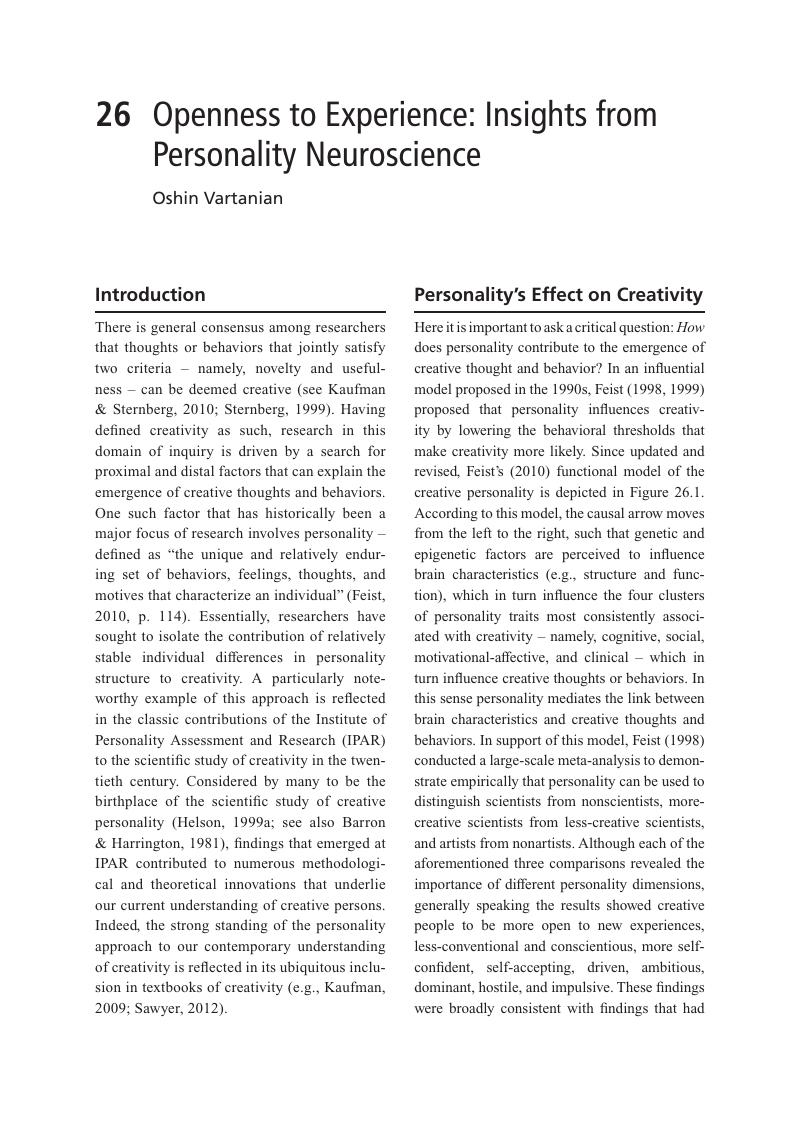Book contents
- The Cambridge Handbook of the Neuroscience of Creativity
- The Cambridge Handbook of the Neuroscience of Creativity
- Copyright page
- Contents
- Figures
- Tables
- Contributors
- Acknowledgments
- Introduction
- Part I Fundamental Concepts
- Part II Pharmacology and Psychopathology
- Part III Attention and Imagination
- Part IV Memory and Language
- Part V Cognitive Control and Executive Functions
- Part VI Reasoning and Intelligence
- Part VII Individual Differences
- 24 The Genetics of Creativity: The Underdog of Behavior Genetics?
- 25 Structural Studies of Creativity Measured by Divergent Thinking
- 26 Openness to Experience: Insights from Personality Neuroscience
- 27 Creativity and the Aging Brain
- Part VIII Artistic and Aesthetic Processes
- Index
- References
26 - Openness to Experience: Insights from Personality Neuroscience
from Part VII - Individual Differences
Published online by Cambridge University Press: 19 January 2018
- The Cambridge Handbook of the Neuroscience of Creativity
- The Cambridge Handbook of the Neuroscience of Creativity
- Copyright page
- Contents
- Figures
- Tables
- Contributors
- Acknowledgments
- Introduction
- Part I Fundamental Concepts
- Part II Pharmacology and Psychopathology
- Part III Attention and Imagination
- Part IV Memory and Language
- Part V Cognitive Control and Executive Functions
- Part VI Reasoning and Intelligence
- Part VII Individual Differences
- 24 The Genetics of Creativity: The Underdog of Behavior Genetics?
- 25 Structural Studies of Creativity Measured by Divergent Thinking
- 26 Openness to Experience: Insights from Personality Neuroscience
- 27 Creativity and the Aging Brain
- Part VIII Artistic and Aesthetic Processes
- Index
- References
Summary

- Type
- Chapter
- Information
- The Cambridge Handbook of the Neuroscience of Creativity , pp. 464 - 475Publisher: Cambridge University PressPrint publication year: 2018
References
- 4
- Cited by



